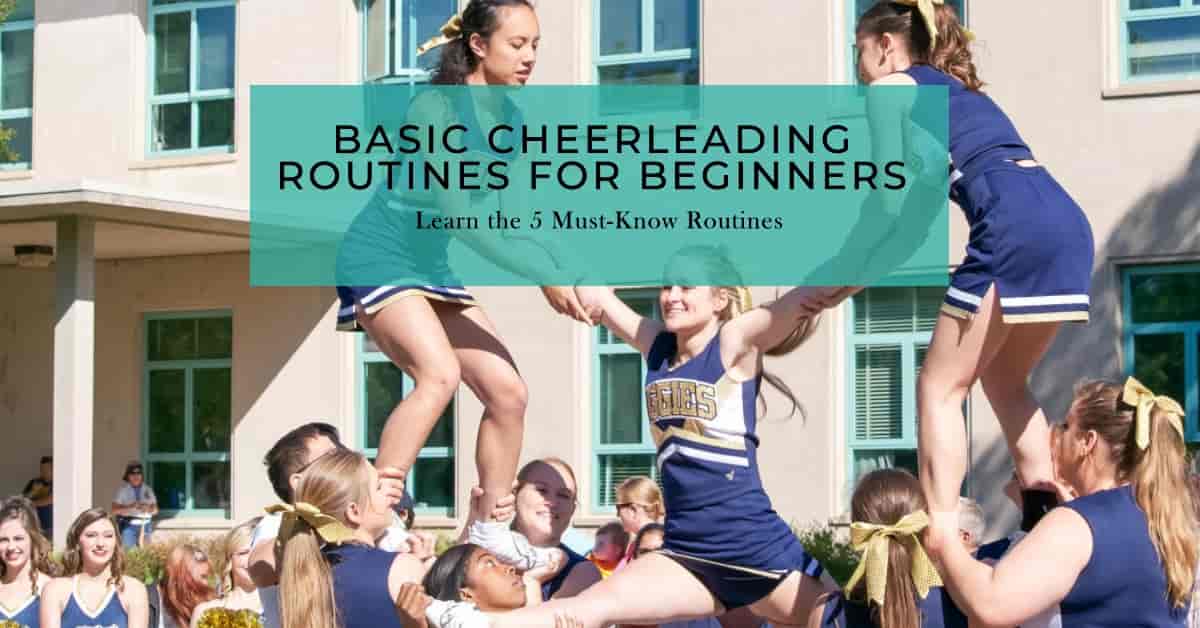Cheerleading routines are an essential part of cheering at sports games and competitions. They allow squads to showcase their spirit, unity, and skills through choreographed mixes of chants, jumps, stunts, tumbling, and dance. While professional cheerleaders perform complex routines, there are 5 cheerleading basics that every beginner should know. Mastering these fundamental cheerleading routines will build a strong foundation of skills to advance to more difficult choreography. This article will provide an overview of cheerleading chants, jumps, stunts, tumbling, and dance motions that you can start practicing right away as a cheer newbie.
Chants
Cheerleading chants are short phrases that are repeated over and over to get the crowd excited and engaged. Squads use chants to direct fans to cheer along and support their team. Three types of simple and common cheerleading chants perfect for beginners are:
- Spellouts – Members spell out words related to their team or school, like G-O B-L-U-E! Fans can follow along and spell with the squad.
- Countdowns – The squad counts down numbers, often leading up to the start of competition or gameplay. 10…9…8… Let’s go team!
- Repeat after me – The cheerleaders call out short phrases for the crowd to echo back. Say Go! Now you say Go!
Learning a few basic chants helps you synchronize motions and vocal cues with your squadmates to pump up the crowd.
Jumps
Jumping is an essential skill in cheerleading that generates excitement and displays the squad’s energy and athleticism. Four basic jump techniques to master as a cheer newbie are:
- Tuck Jump – Spring into the air and bring your knees up to your chest while grasping the back of your legs.
- Pike Jump – Leap up and bring your straight legs together in front of you with knees bent while extending your arms forward over your legs.
- Spread Eagle – Execute a big jump with arms and legs spread out wide and fingers reaching towards the ground.
- Toe Touch – Jump up bringing your legs into a straddle position, and reach to touch your toes with your fingertips.
Practicing each jump’s footwork, timing, and coordination will give you elements to add visual appeal to any cheer.
Stunts
Stunts are spectacular displays of balance, strength, and teamwork where flyers are lifted, tossed, and supported by their bases below. These four stunts are doable even for beginner cheerleaders with a spotter:
- Thigh Stand – A flyer stands on the upper thighs of two bases who grip underneath the flyer’s feet.
- Shoulder Sit – A flyer sits on the shoulders of a base who supports them with hands on their shins or ankles.
- Prep – A flyer’s waist is held up by two bases, one on each side, while standing with arms overhead.
- Half – Similar to a prep but the flyer’s hands are on a single base’s shoulder instead of overhead.
Mastering basics like these will get you comfortable being lifted while bases practice supporting skills for more advanced stunts.
Tumbling
Incorporating gymnastic tumbling skills adds excitement to cheer performances with athletic feats of flexibility and agility. Four fundamental tumbling moves to try are:
- Forward Rolls – Crouch in a tucked position and roll forward pushing off with your hands.
- Backward Rolls – Squat down and roll over your shoulder while curving your back.
- Cartwheels – Fling one leg up as you turn sideways in an inverted split position and land with arms raised.
- Roundoffs – Perform a cartwheel and continue to drive through your momentum into a back handspring.
Even simply executed, these rolling and flipping skills demonstrate talent that engages crowds.
Dance
Every cheer dance incorporates simple motions that anyone can execute regardless of experience. Two easy arm motions and two footwork shuffles are:
- High V – Raise both straightened arms up at an angle above your head in a V-shape.
- Low V – Hold straightened arms out wide at hip level in a V shape.
- Touchdown – Lift one knee up while extending the opposite arm straight up overhead.
- Clap – Stomp feet to the beat while clapping hands overhead.
Adding these simple cheers jazzes up choreography so you look like a professional dancer.
Putting It All Together
Trying out these basic chants, jumps, stunts, tumbling, and dance moves will give you the key pieces to start learning complete cheerleading routines. Go through each skill slowly when first practicing for proper technique. As you become comfortable, combine skills together and add your own unique flair. Perform your cheerleading basics for friends and ask for feedback. Amp up your energy and confidence to get the crowd going. With dedication to fundamentals, you will be leading cheers and stunting with the best of them.

